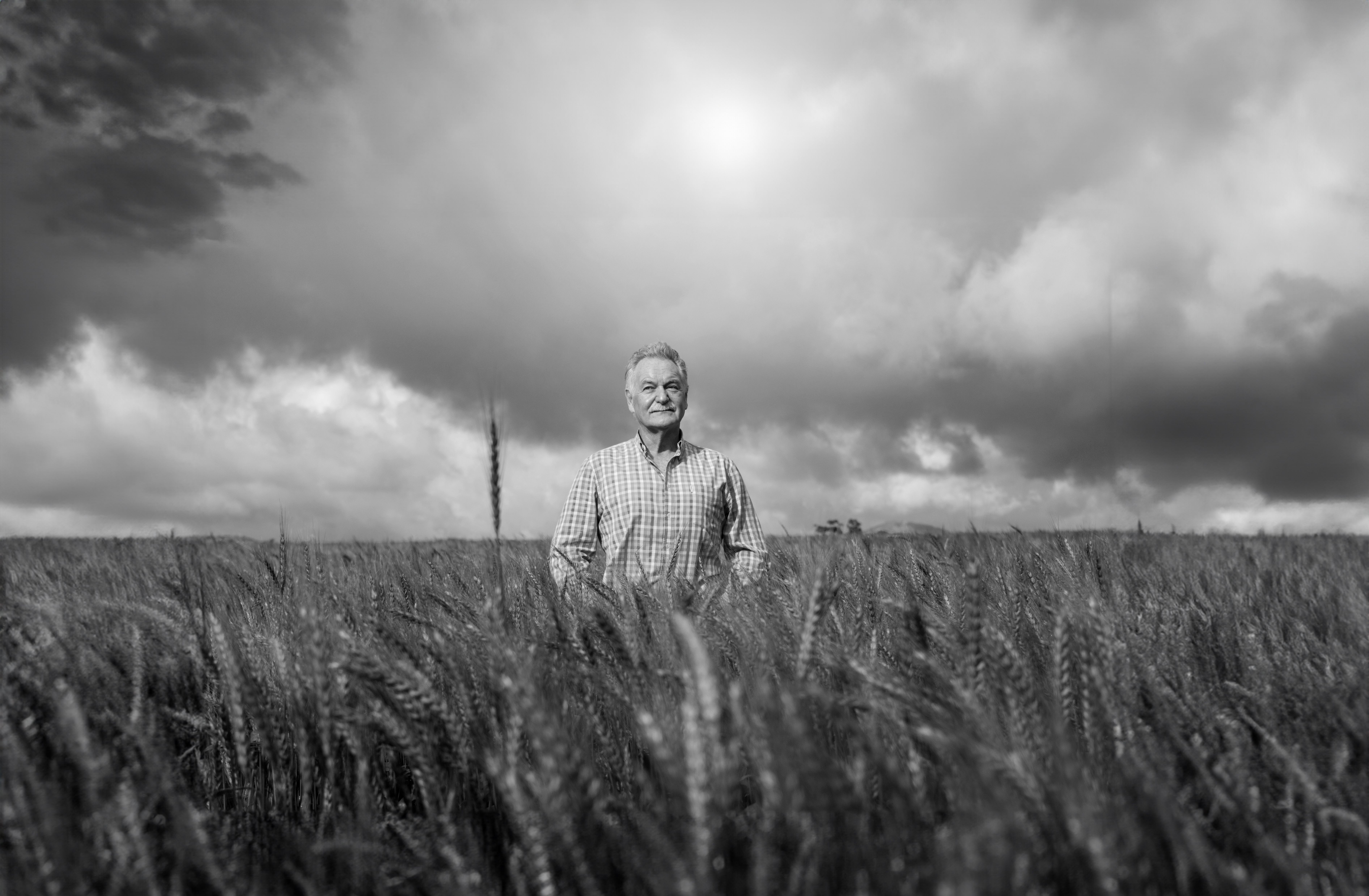Charles Back is a pioneering figure in South African wine. Between Fairview and Spice Route, he has helped drive a quality revolution in the Swartland and the Western Cape that is now felt in every part of South Africa's wine industry. His influence is such that in 1996, he was voted the second most influential figure in South African wine, behind Nelson Mandela and in 2014, was presented with a ‘Lifetime Achievement Award’ by the International Wine Challenge. Though slightly alarmed to receive this award at just 58, Charles was happy to join the likes of Hugh Johnson, Peter Lehmann and Michael Broadbent as a recipient of such an accolade!
It was a pleasure to speak with Charles on his recent trip to the UK. The following interview covers a broad range of topics close to his heart: from family and farming, to the importance of social sustainability and the Swartland revolution. Yet despite so much discussed, it still feels like we are only scratching the surface of what Charles is up to. No doubt there is still a lot left to come.
For more information about purchasing the wines of Fairview and Spice Route, please contact your Account Manager. Not yet a customer? Contact Us to discuss opening an account.
Could you talk us through your family’s winemaking history in South Africa?
My grandfather came to South Africa in 1901. He was a 16-year-old Lithuanian immigrant who worked as a butcher boy and dockyard worker in Cape Town, just trying to make ends meet.
The butcher's owner was very impressed with his work ethos and offered him the opportunity to move to Paarl, my hometown, to open a butcher's shop. Here, he became intensely interested in farming, so much so that by 1916, he had bought his first farm, Backsberg, which was still in family hands up until very recently. He saved up all his money, doubling up as a barman at night - the true rags-to-farming story.
Unfortunately for him, he had two sons who both wanted to do the same thing!
He bought Fairview for my late father in 1937, and my uncle took over Backsburg after my grandfather's death; that’s basically how I got into wine. I joined my father in 1978 and have just completed my 45th vintage there.
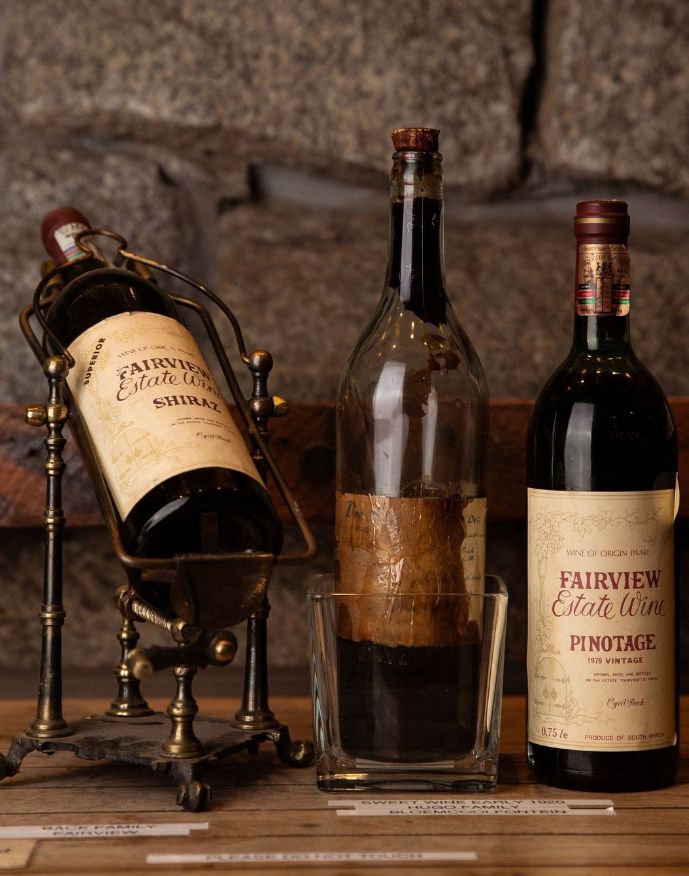
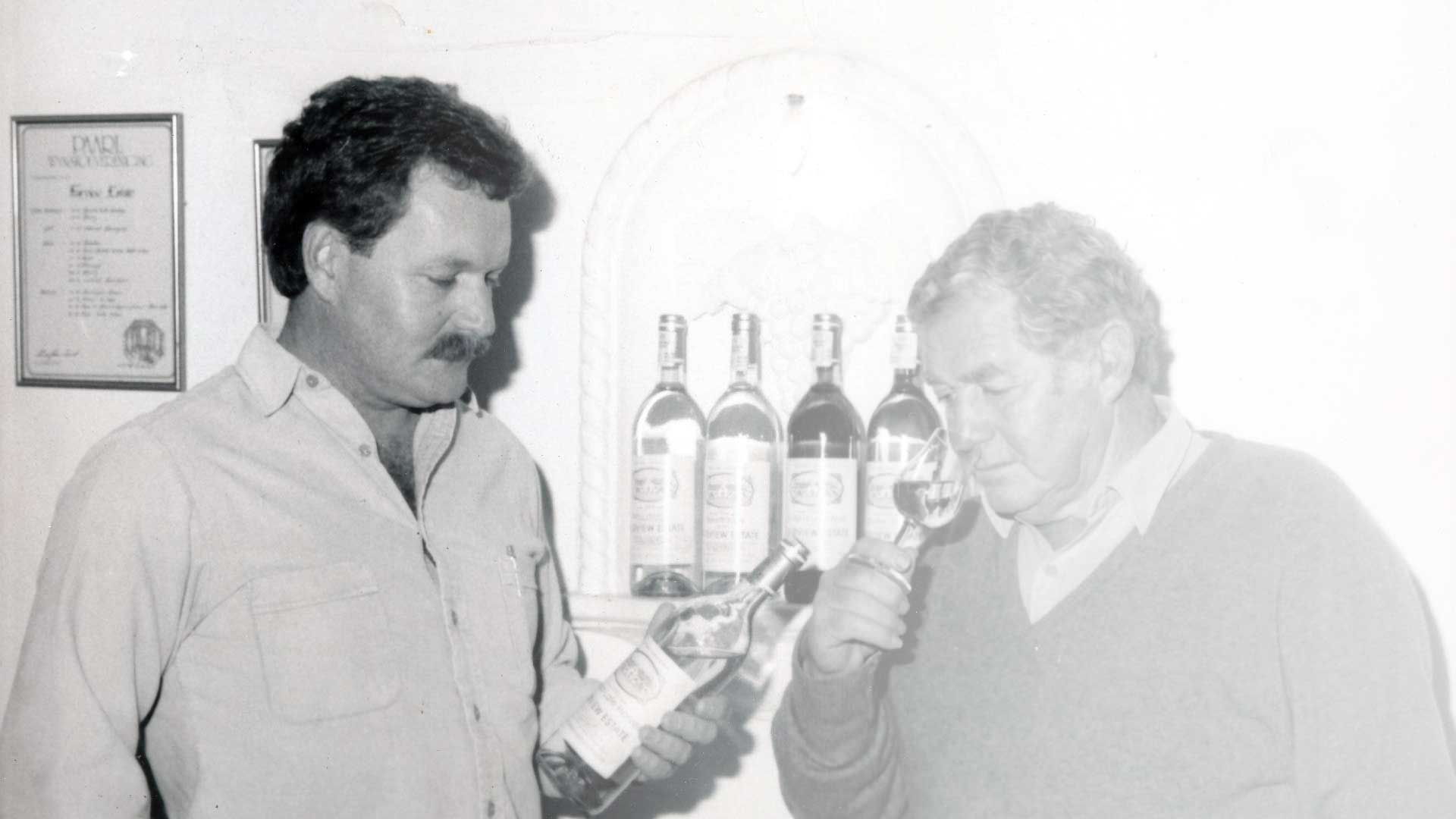
It’s never a given that those who grow up around wine will join the industry. What inspired you to become a winemaker?
My father was a very hard-working man, and I loved the smell of fermenting grape juice on the farm. There wasn’t refrigeration in those days, so when fermentations started, the whole farm smelt like fermenting must. I couldn't stay away from the cellar as a little boy because I was fascinated by the process. I always enjoyed the machines involved, as I have a bit of a flair for mechanics - with mixed success, though, because I lost a finger!
Since I was four years old, I have been preoccupied with wanting to become a farmer. Farming has always been part of who I am.
Your family winery, Fairview, is in Paarl. What is it about this particular area that makes great wine?
Paarl is an underrated region. I think it's going to be the next big thing, where the next wave of fashionable wines will come from. I'm on the southern slopes of the Paarl Mountains, so from my home, I can see Table Mountain. Here, it’s not as hot as the rest of Paarl. The town is in a valley in a dip between the mountains, so it’s quite warm. But, in the southern part of Paarl where we are, which is open all the way to the coast, that's a really good area.
In the beginning, our farm [Fairview] was just a narrow strip of land running down the mountainside, so you had the good soil on the mountain slope and then poor soil on the valley floor. I've managed to buy up land from my neighbours over the years, so now it's mainly vineyards, all planted on the mountain, and the valley floor is for grazing and crops and stuff like that. All the vines are up the mountain and at a nice altitude overlooking the Atlantic Ocean.
You also make wines from Darling, which offers a very different climate to Paarl. What attracted you to this area?
I was aware of the global warming phenomenon. I could feel it. Even after 45 vintages, I can still remember the first. I remember those fermentation temperatures and the heat of the grapes when they came in. So, I was acutely aware that over time, there was pressure on temperature. I planted grape varieties that were heat and drought-resistant, but I was also looking for cooler areas.
I dabbled in all the coastal parts of South Africa, right down to Elim on the southern coast. But the problem with a lot of these regions is that the soils aren't that great. They’re often made up of sand and underlying clay. Darling offers a coastal climate, but it's also got the most fabulous soil in South Africa, especially on the hills.
The soils on the Darling Hills or Groenekloof are amazing, properly decomposed granite. They’re very deep and have great water-retention capacity, soaking up the winter water to help ripen fruit through the summer without irrigation. It makes for a very special area.
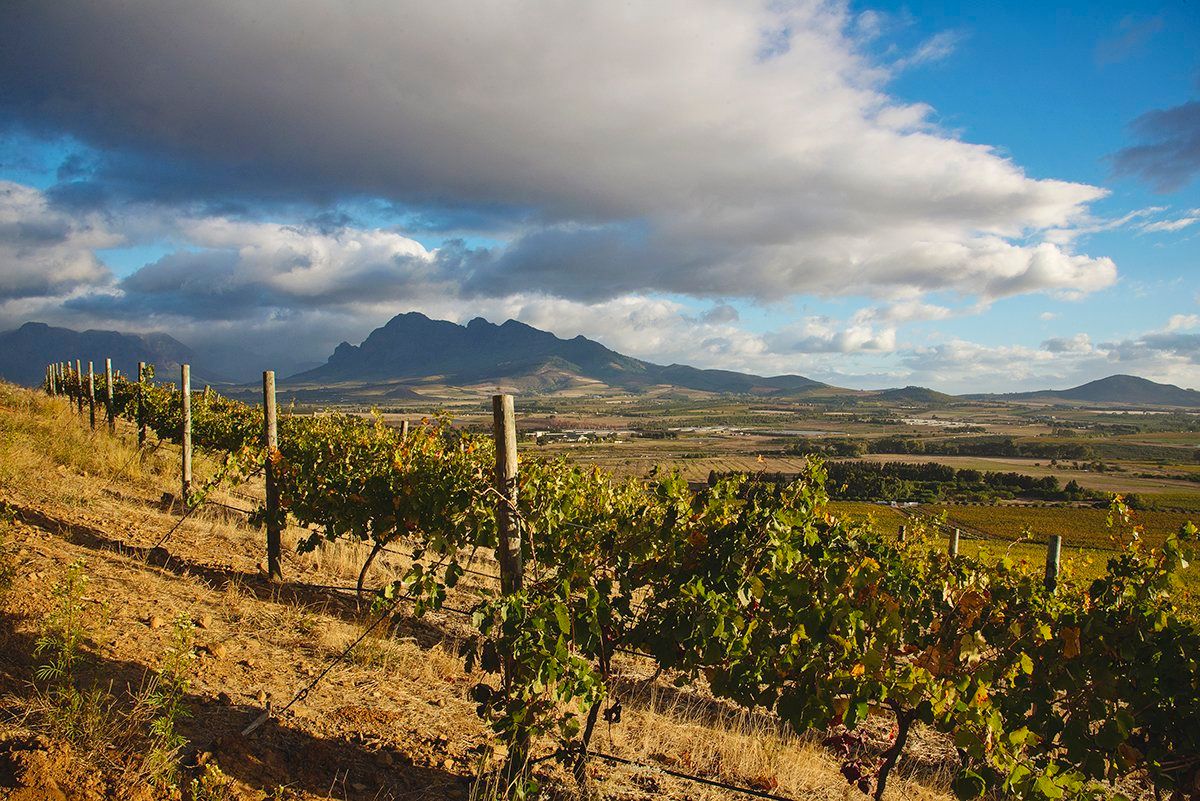
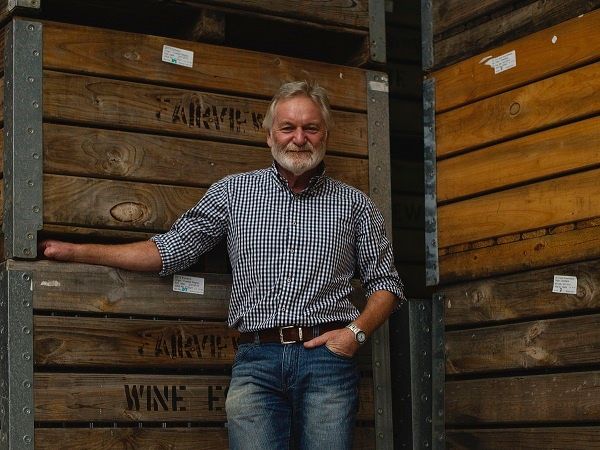
What sort of grape varieties do you find are suited to that?
Definitely Sauvignon Blanc. Sauvignon Blanc is not easy to grow, but in those soils, it produces sufficient canopy cover and ripens the crop very easily. We’ve also dabbled with Sauvignon, Chenin and Shiraz. I've just bottled a single vineyard Shiraz from Darling [Lanner Hill], and it's completely different to other examples from South Africa. You’ve got more of those white pepper, spicy notes rather than ripe plum, and that's very interesting. I’ve even got Sangiovese growing there, and we've also had our first harvest of Darling Pinotage, which is phenomenal, like a fruit bomb. Grenache, surprisingly enough, is nice and fruity and upfront, and that does well alongside Chardonnay and Pinot Noir.
Ultimately, I think Darling's signature wine would be a clean, fresh style of Sauvignon Blanc with tropical notes, blended with about 15 - 20% barrel-fermented Semillon. Semillon does very well there.
Mediterranean grape varieties are becoming more commonly grown in South Africa, are you interested in their potential?
We've dabbled in lots of different grape varieties [across all the estates]. The problem in South Africa is that during apartheid, which was 30 years ago now, the isolation and lack of international contact meant that people here always perceived Bordeaux wine to be the greatest in the world. They weren’t exposed to anything else. So, a lot of Cabernet Sauvignon and Merlot were planted all over South Africa. But South Africa is a much warmer area than Bordeaux, so I’ve worked very hard to try different varieties for the last 30 years. Tannat does very well, as do Petit Sirah and Tempranillo. We are working with a lot of Mediterranean varieties.
I am also interested in Georgian varieties. I’ve been to Georgia twice in the last couple of years, and they have around 525 indigenous grapes. A lot of them are heat resistant because that's quite a warm area. I'd love to get my hands on Saperavi, because I think that will do very well in South Africa.
Could you describe your overall approach with regard to viticulture and winemaking?
You can only make good wine out of good grapes. That's a prerequisite; it’s non-negotiable. Good grapes come from vines that are in sync with their environment, planted in the right place, on the right rootstock and in the right row direction. We are very analytical about what we do, undertaking proper soil assessments in our vineyards. We rectify the soil pH, if necessary, plant the right variety in the right place and then pick at optimum ripeness. Rosa Kruger [founder of the Old Vine Project] also consults with us on certain aspects of our single vineyard programmes.
You must use every tool in the box to determine optimum ripeness because, in South Africa, the warm growing conditions make it easy for sugar content to quickly outstrip phenolic ripeness. We're very mindful of that. We don't want over-extracted alcoholic wines; we want them to have balance and finesse.
The other thing is that you must harvest at night, when it’s cooler, and be as fast as possible. We use mechanical harvesters to achieve this, with three or four running in the night to hit all the blocks at the right time. It’s impossible to get it 100% right, but it reduces the margin for error. Our vineyards in the Swartland are all certified organic, too.
We’ve got two cellars where we bring the fruit, one at Fairview and one closer to Darling in Malmesbury. We try to get the fruit through as quickly as possible, and after that, the winemaking is very simple. We have five winemakers on the team, and we give them a lot of freedom to contribute their own flair and interpretation. We also do most things by consensus. It’s a minimalistic winemaking approach based on sound viticulture.
We also benchmark against wines from around the world, which is very important. South Africa is reasonably isolated, so I encourage my winemakers to travel a lot. We taste samples from all over the world, do regular blind tastings, and bring in guest tasters because you must be very mindful that your house style doesn’t become too homely over time!


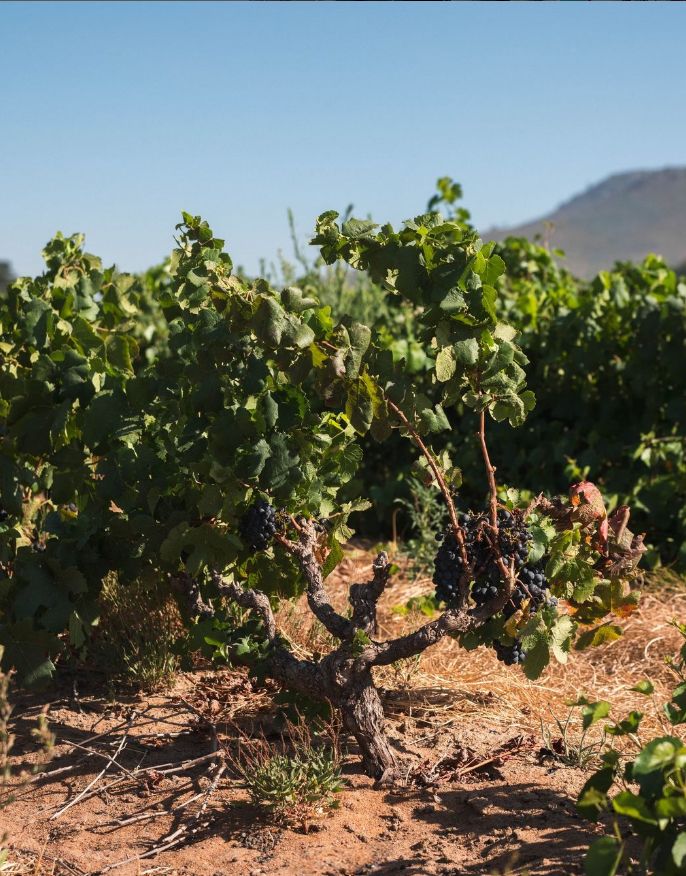
Are any of your vineyards certified as ‘Heritage’? [vines over the age of 35 submitted by members of the Old Vines Project]
I think we [Spice Route] were instrumental right from the beginning in identifying old Grenache vines in Piekenierskloof [Swartland] with Eben [Sadie], our first winemaker. We discovered many of those vineyards together. Our interest in those old vines helped drive a renaissance, and then Rosa Kruger formed the Old Vine Project, which is a fantastic association; it has really elevated the quality and profile of South African wine internationally.
These vineyards are now becoming sought after, and the farmers are getting reasonable remuneration for them. This is vitally important, as it keeps the vines in the ground. If the vineyard doesn't work financially, people will migrate very quickly to citrus or rooibos tea. These vines are always under threat as the yield of tonnes per hectare is very, very low, and the fruit needs to command a higher price to make the farmer's business viable.
Do you think this certification has helped improve consumer perception of premium South African wines?
I think so because South Africa is a relatively new country in the eyes of the international wine market [due in part to the boycott of South African exports during apartheid]. I think the Heritage Vine certification helps drive a change in quality perception, which is vital because producing wine in South Africa is not cheaper than anywhere else in the world. Everybody's got this perception that it's very cheap to grow grapes in South Africa, but it’s cheaper to grow grapes in the South of France than in South Africa. There is also still a hangover in terms of how the country is perceived post-apartheid. So, to sell a bottle of South African wine, you first have to, to a large degree, sell the country, because wine is one of those agricultural products that is very closely linked to its origin. The Old Vine Project has done a lot to enhance the stature of the industry for sure.
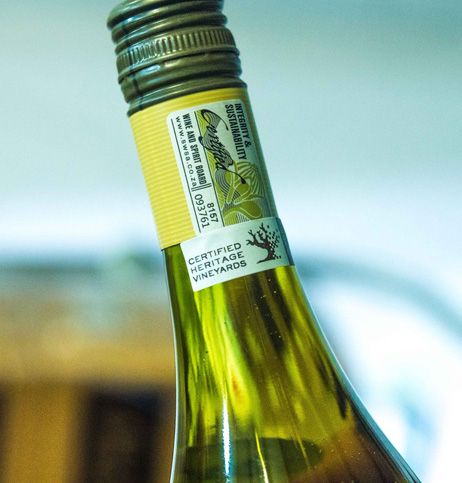
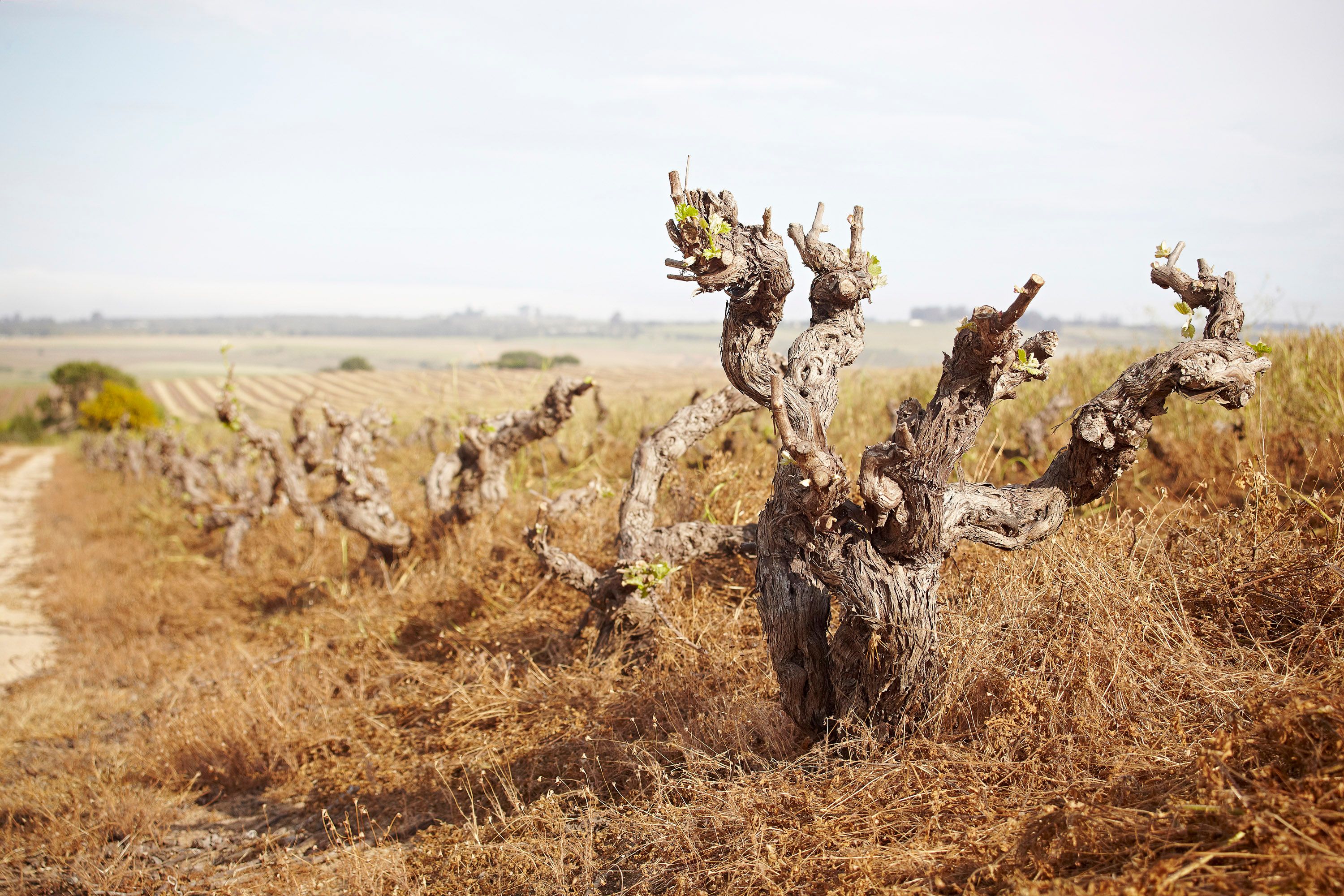
Aside from making great wine, you're quite highly regarded for your approach to social sustainability at Fairview. How does the local community factor into how you work?
That is a very complex question, and I could keep you busy answering it for such a long time! You can't make a good wine with an unfairly treated workforce. That's not going to work.
I've always wanted to push up the average income of a household, but with farming, it is extremely difficult to pay beyond what is reasonably acceptable for an agricultural product. I realised that to do that, I had to create dual-income households. There were many women living on the farm with their husbands, who worked in the vineyard as seasonal workers. They would come to help with pruning, but that’s not a permanent job. I wanted to create permanent, sustainable jobs.
I'm quite big into encouraging tourism and value-adding agriculture, so through this, we have been able to create more full-time jobs for women. We now employ about 130 people in our cheese factory, and most of them started off as female seasonal workers. Today, I think there are more women working at Fairview than men.
Value-adding is about creating more skilled jobs in production that add value to the product rather than just sticking with roles relating to base material – like producing grapes or milk. So, in winemaking, you're adding value to the product and in the cheese making, in running the restaurants, and in the tasting room, where you’re employing tasting hosts, you're adding value with all these roles. Today, we employ about 500 people, and they're all in these value-added roles that are permanent and well-paid. There are very few primarily on the agricultural side now because we’re largely, slowly mechanising this rather than relying on low-pay seasonal workers.
All my wines are Fairtrade accredited, but I don't put it on the packaging because somehow there's a slightly negative perception of Fairtrade wine—that it’s cheap and cheerful supermarket stuff. I enjoy the Fairtrade system. It's fool proof and very thorough.
Sustainability has become a bit of a buzzword in the wine industry, and when discussed, it’s often more in relation to the natural environment. It’s easy to overlook the other pillars of sustainability: economic and social. Sustainability only works if all three are considered.
Exactly, you have to make the investments into sustainability, and the rewards aren't immediate; it’s a long process. Most of those investments involve very long-term projects, so you need to have a viable business model to be able to be sustainable. And then you also need to keep your workforce in a way that is sustainable, one in which they can sustain themselves and actually flourish, put their kids to university one day and improve the next generation’s lives. That's what sustainability means to me.
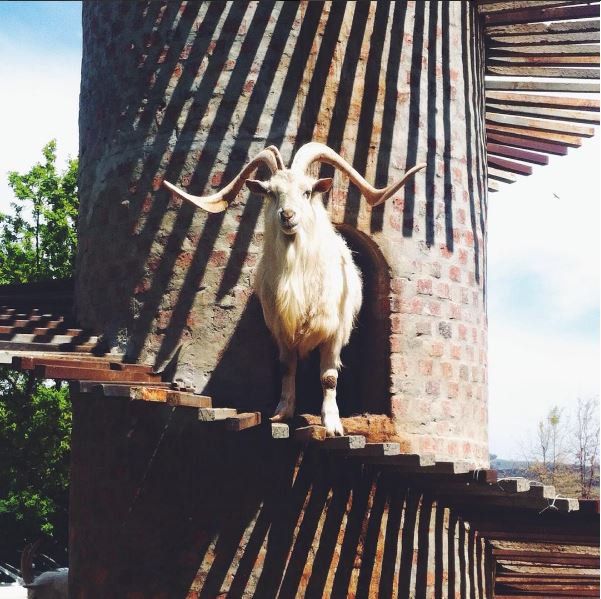

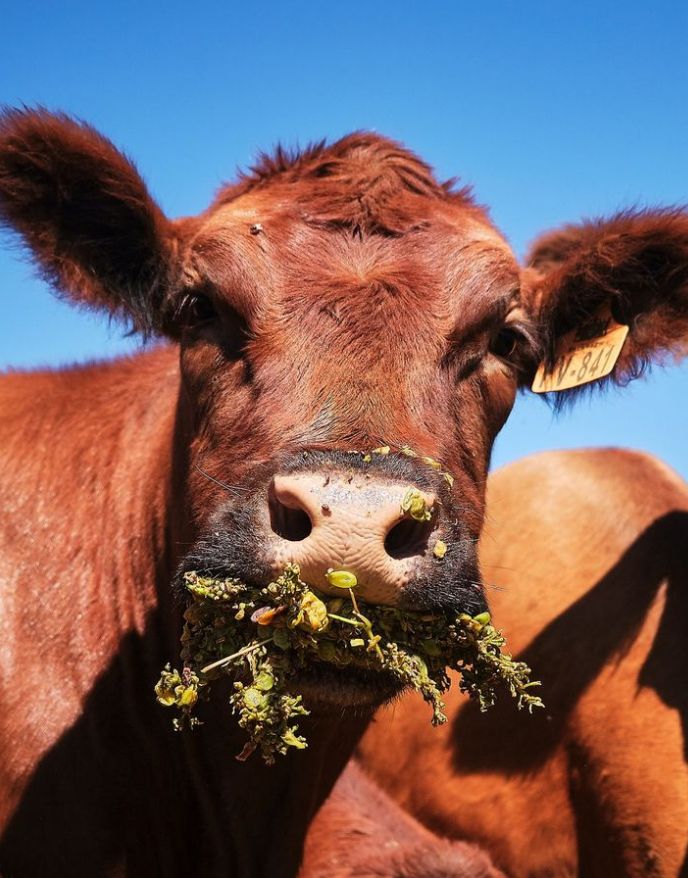
Your other key project is Spice Route in the Swartland, which you founded long before the Swartand revolution. What attracted you to this region?
I was younger then, obviously, and much more ambitious than I am now. I wanted to grow my production, so I would always taste from various cooperatives every year. I still do that, actually. I go to visit co-ops, chat to winemakers, and taste. These winemakers don’t often have a lot of exposure, but they’re very skilled because they handle a lot of grapes.
So, I went to this co-op, and the guy took me to a tank of Sauvignon Blanc, and I thought, ‘Why does he want to show me this? That’s not a variety that does well here’. But he poured it into my glass and then the whole cellar filled up with this massive, tropical bouquet. And I thought, ‘What the hell is going on? What is this? Where did it come from?’. I found out that it came from this farm, which translates from Afrikaans to ‘Amos Creek’. I had to see it, so I left in quite a hurry and got to this farm.
It wasn’t very pretty, but it had an interesting soil mix where the Sauvignon Blanc was being grown. My immediate thought was, if it made that good a Sauvignon Blanc in what’s perceived to be a warm area, imagine what Rhône varieties could do. I met the owner, and I bought Amos Creek that day and started making wine in the Swartland.
I decided to plant Rhône varieties and hire a young winemaker who could express that style. After some research, I found Eben [Sadie] working as an assistant winemaker in another co-op. From that first vintage, I immediately knew two things. One, that the Swartland is a great area for making good wine, and two, that Eben is going to want to do his own thing one day. So, I let him do that on the side from day one in the winery, which worked out very well for everyone: Eben, myself and the industry!
How do you think Spice Route inspired the Swartland Revolution? [a movement pioneered by Eben Sadie, the Mullineux’s, Adi Badenhorst and Porseleinberg to make and promote quality, site-specific wine from the Swartland]
I definitely think Spice Route was the catalyst for the Swartland Revolution. You know, sometimes being first is about breaking the ground so that others can sow the seeds. I'm happy that it was something I could be involved in.
It's important to me that South Africa, as a category or as a country, found a new area that could excite people around the world and get people to buy South African wine. That gives me the joy and pleasure of the whole situation. And also, for Eben, because if it wasn't for our interaction, he wouldn't be where he is today, but all that is all by his own endeavour. Spice Route was just the catalyst. I know the role that I was intended to play, and I am very happy with that.
It’s very exciting and rewarding [to see the Swartland take off]. It’s also a place where it was cheaper to get in, which has given a lot of young winemakers who didn’t have any backing the ability to start businesses in an area that rewards them quite quickly. The Swartland has been instrumental in reshaping the South African wine industry in that way.
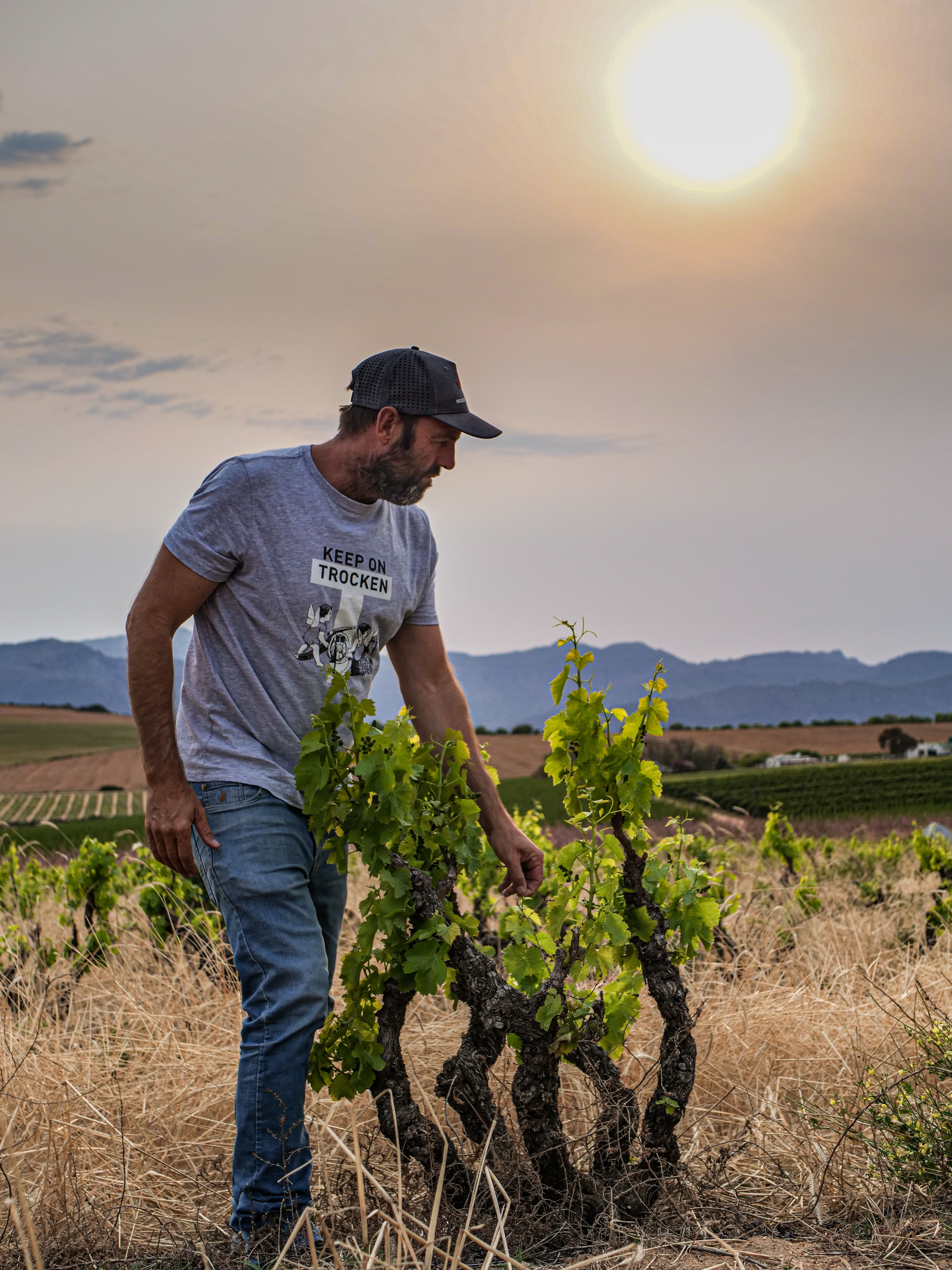
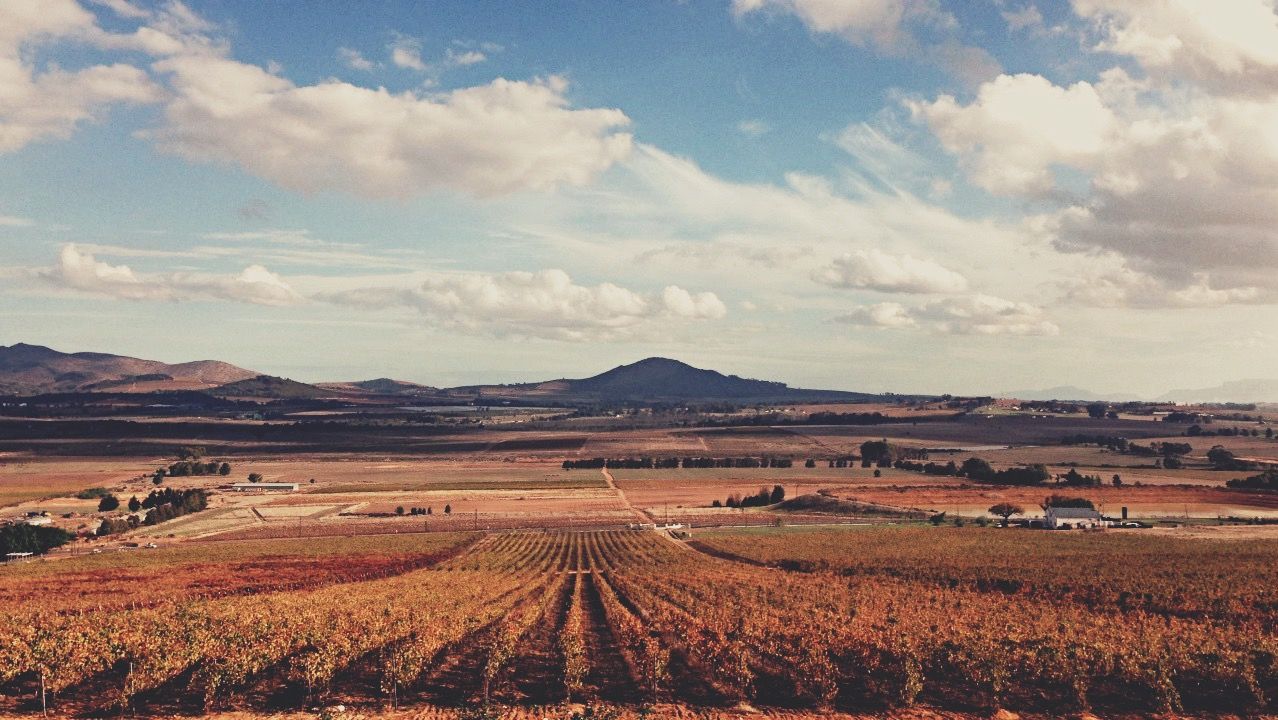
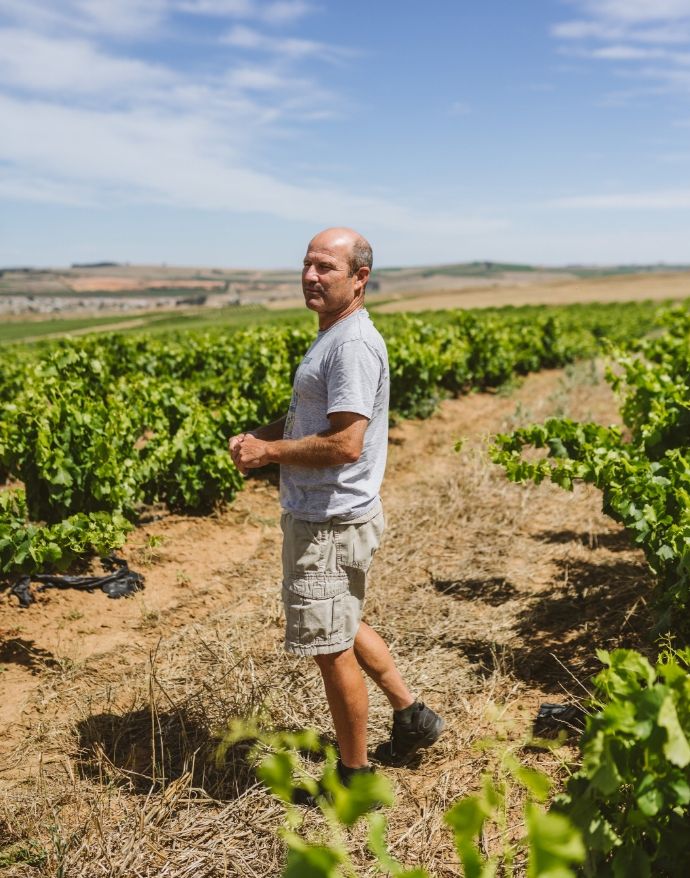
Left: Spice Route's first winemaker, Eben Sadie (Photography © LITTLEWINE), Right: Spice Route's current winemaker: Charl du Plessis
How has the winemaking at Spice Route changed since its founding?
I think our wines have improved a lot. My personal view is that Charl du Plessis, my winemaker, is exceptionally talented. I think his biggest problem is that he’s underrated because he underrates himself; he's the humble, shy back-office boy. He is very good at what he does, and Spice Route has gone through a metamorphosis under his guidance.
The Swartland is an exciting area under severe pressure from global warming. You can still make great wines, but the future is uncertain, and as a result, we are always looking out for new areas, new opportunities and new varieties. The Cape was discovered by the ancient Mariners who travelled around the coast in search of spices. Spice Route is going to keep searching for better sites and better varieties in the future.
And finally, what are your thoughts on the current South African winemaking scene?
I think we're going through a very exciting phase. We've had a lot of talented young people coming into the industry. Last year, at your South African tasting, I had the privilege of spending time with Peter-Allan [Crystallum and Gabriëlskloof], Marelise from Momento and John from Thorne & Daughters. We went on a road show, the four of us, and each had the opportunity to present.
As I listened to them, I understood that I was witnessing the New South African winemaker: eloquent, well-travelled, open to new ideas, good at marketing and good at social media. South Africans are normally very reserved, shy, under-the-radar type people, but the new generation has completely changed that. In my day, you had to be involved in a family farm – it was an inheritance business. The new generation just needs technology, a philosophy and an idea to start the wine business. I think that's the main difference in how it's going to evolve in the future. Ultimately, I'd like to think that the future is quite bright.
For more information about purchasing the wines of Fairview and Spice Route, please contact your Account Manager. Not yet a customer? Contact Us to discuss opening an account.
